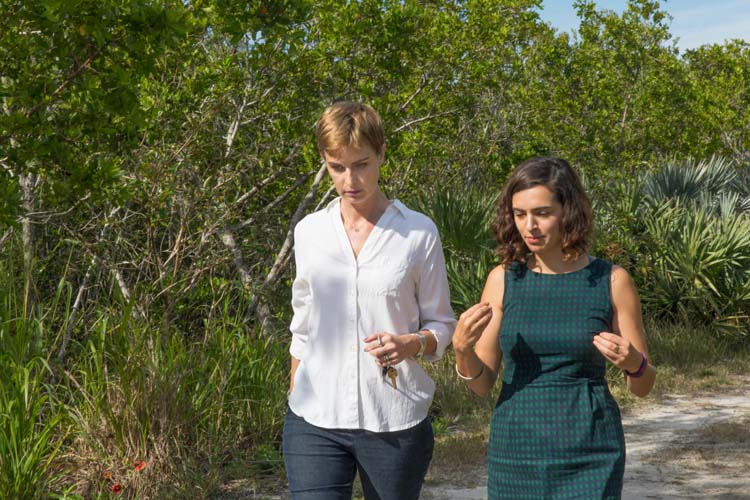
The abrupt resignation of Environmental Learning Center Executive Director Molly Steinwald on Friday, Jan. 18, came as a surprise to the organization’s board of directors, says Board Chairman Don Barr.
In a notice posted on her Facebook page, Steinwald wrote, in part, “I resigned as the Executive Director of Environmental Learning Center (ELC) Friday, due to differences in governance and understanding of the immediate needs of the organization.”
By Saturday, after Steinwald and board members agreed that making her exit immediate would be best, she was gone. The search quickly began to find a replacement, which Barr estimates will take three to six months.
Only the second executive director since the ELC’s inception in 1988, Steinwald brought impressive credentials to the position when she arrived in November 2014 to replace Holly Dill, who retired after 27 years at the helm of the island nonprofit known for teaching county grade-schoolers about ecology and the environment.
So what happened? Was the board dissatisfied? Was Steinwald asked to leave?
Not according to Barr, who stated without hesitation that the board was “very supportive of Molly;” that there were no performance issues; and that “we did not push her.”
As a matter of fact, he added, “Molly had been looking to relocate for some time.”
Asked about rumors that numerous disgruntled ELC staff members had left during Steinwald’s watch, Barr acknowledged there has been turnover. But he contended that isn’t unusual when an institution embarks on major reorganization, in this case “with greater focus on philanthropy,” providing environmental education and immersion for older people, handicapped people and others in the community who have not previously had access to those services and benefits.
Some people welcomed the changes, some did not, he said. But he insisted “that had nothing to do with Molly, but, rather, with the strategic direction of the ELC.”
Barr believes the staff should be involved in the choice of a new executive director, because they’re the ones who will have to work with him or her daily. “We need their input as we move the vision forward.”
Board member and local attorney Bill Stewart agreed with Barr’s assessment of the board’s supportive relationship with Steinwald.
In his opinion, Steinwald “has really been good for the ELC, the right person at the right time” to take the organization to where it currently is, on the brink of beginning the permitting process to implement a multimillion-dollar expansion and gearing up for a major capital campaign.
According to preliminary plans released in August, ELC leaders foresee “a multiphase, multiyear growth process” that will include construction of a 23,455-square-foot interpretive center; a 4,750-square-foot volunteer training and grounds stewardship center; a 2,500-square-foot education/event pavilion; a 1,350-square-foot “critter corner”; and a 641-square-foot lagoon terrace.
“We are extremely excited to be completing the master plan in preparation for entering our new decade of life,” Steinwald said in August, adding that the ELC’s new mission is “to educate, inspire and empower all people to be active stewards of the environment and their own well-being.”
With the executive director’s chair vacant, Barr said he and the vice-chair have had to do a bit of tap-dancing as they take on day-to-day tasks requiring attention. “We’re jumping in, keeping the boat sailing.”
Although the loss of an executive director at this crucial juncture could delay the group’s ambitious expansion project, Barr remains upbeat.
To avoid missteps and ensure the master plan and business plan are complete and accurate, the Environmental Learning Center has hired a consulting firm that has experience with similar projects.
Barr’s business goal is that ELC income sources are evenly split between earned income and contributions. He envisions the master plan enabling the center to grow in a sustainable way, following the examples of McKee Botanical Garden and St. Edward’s School, adding significant cultural, environmental and educational value to the community.
The Environmental Learning Center is located on a 64-acre island campus at the western base of the Wabasso Bridge on the 510 Causeway. A not-for-profit 501(c)3, the organization has a staff of 14 and more than 260 volunteers, including a 15-member board of directors and a 15-member foundation board. Since its genesis in 1988, the ELC has become the epicenter of nature education, exploration and hands-on experiences for adults, families and especially school kids.



